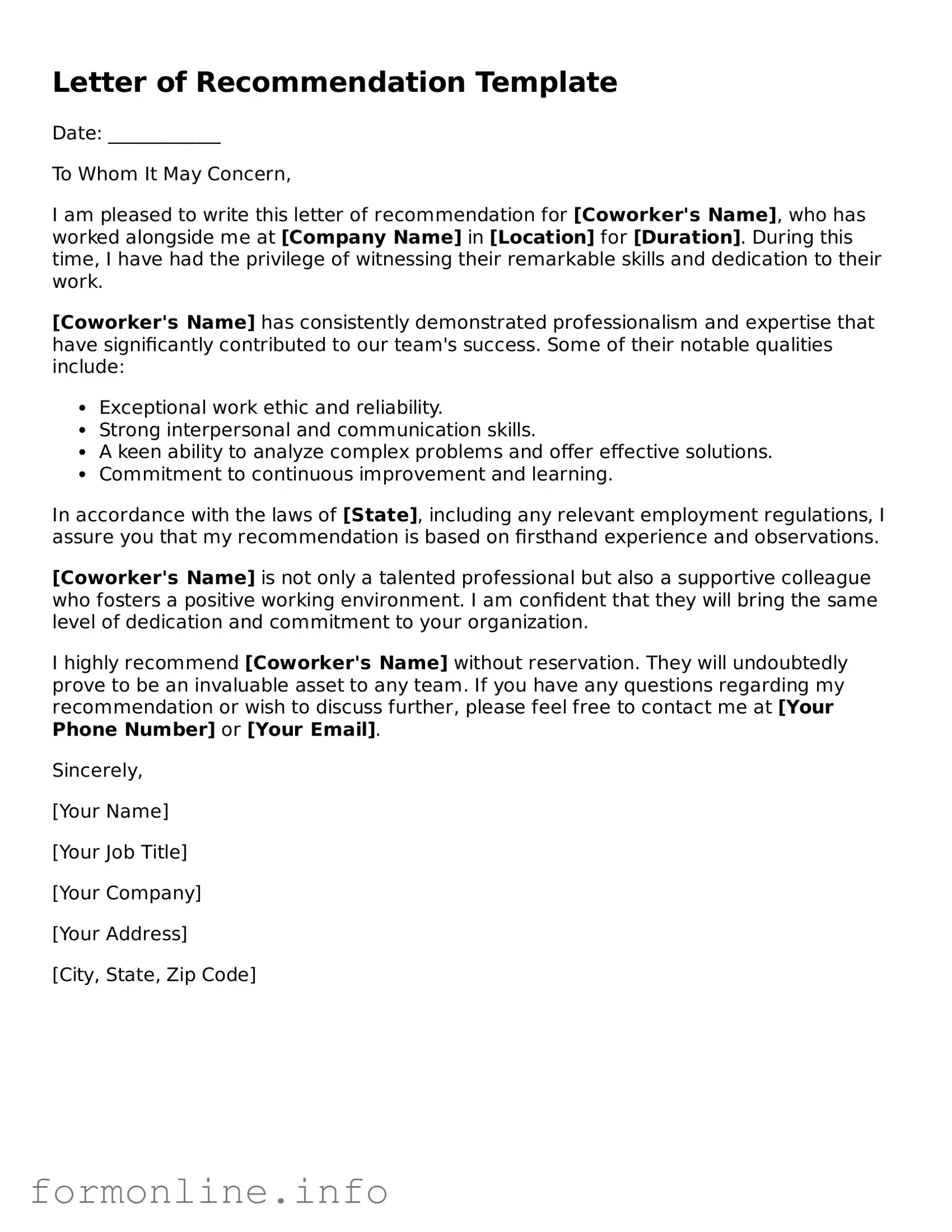Letter of Recommendation Template
Date: ____________
To Whom It May Concern,
I am pleased to write this letter of recommendation for [Coworker's Name], who has worked alongside me at [Company Name] in [Location] for [Duration]. During this time, I have had the privilege of witnessing their remarkable skills and dedication to their work.
[Coworker's Name] has consistently demonstrated professionalism and expertise that have significantly contributed to our team's success. Some of their notable qualities include:
- Exceptional work ethic and reliability.
- Strong interpersonal and communication skills.
- A keen ability to analyze complex problems and offer effective solutions.
- Commitment to continuous improvement and learning.
In accordance with the laws of [State], including any relevant employment regulations, I assure you that my recommendation is based on firsthand experience and observations.
[Coworker's Name] is not only a talented professional but also a supportive colleague who fosters a positive working environment. I am confident that they will bring the same level of dedication and commitment to your organization.
I highly recommend [Coworker's Name] without reservation. They will undoubtedly prove to be an invaluable asset to any team. If you have any questions regarding my recommendation or wish to discuss further, please feel free to contact me at [Your Phone Number] or [Your Email].
Sincerely,
[Your Name]
[Your Job Title]
[Your Company]
[Your Address]
[City, State, Zip Code]
